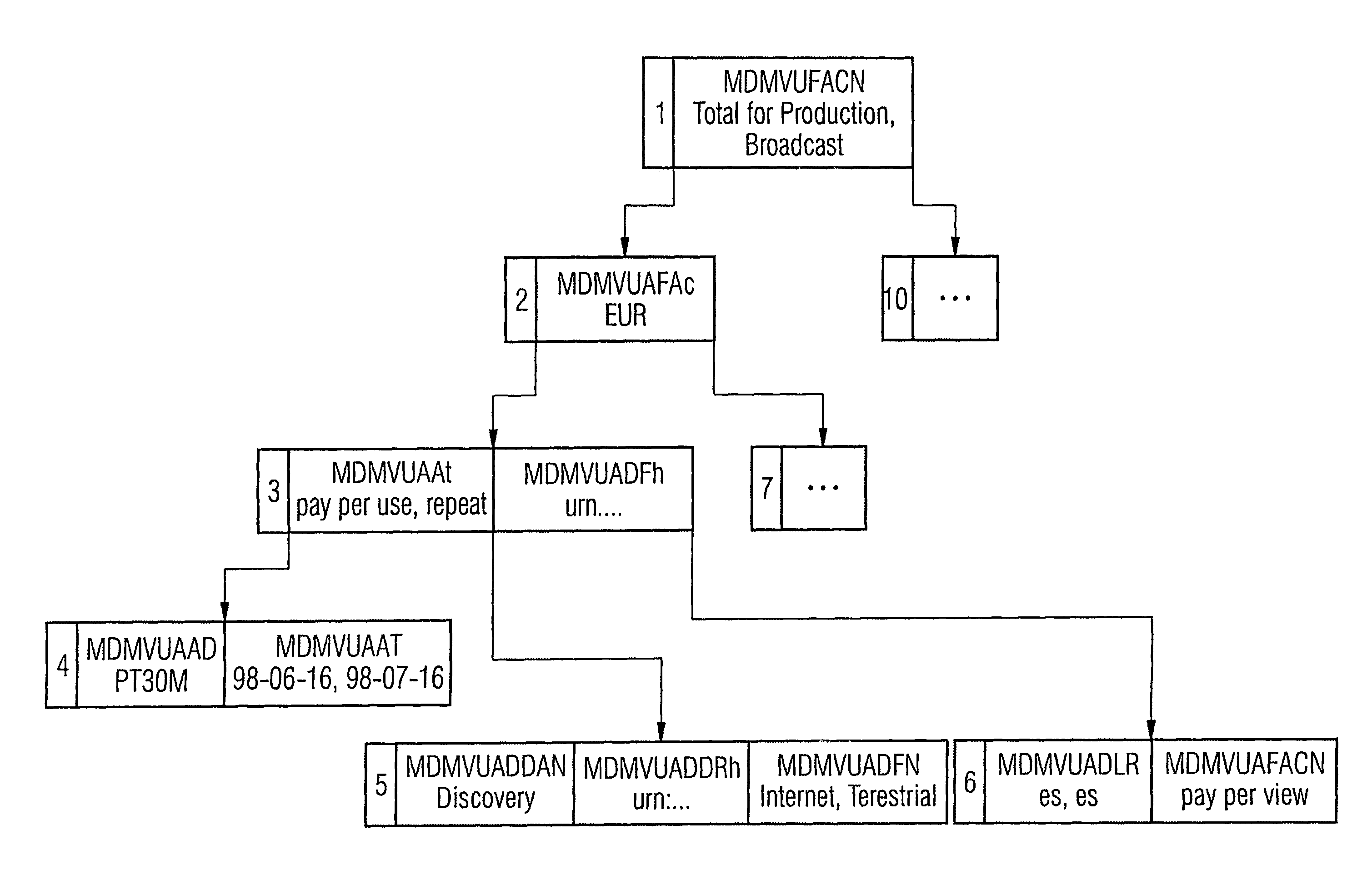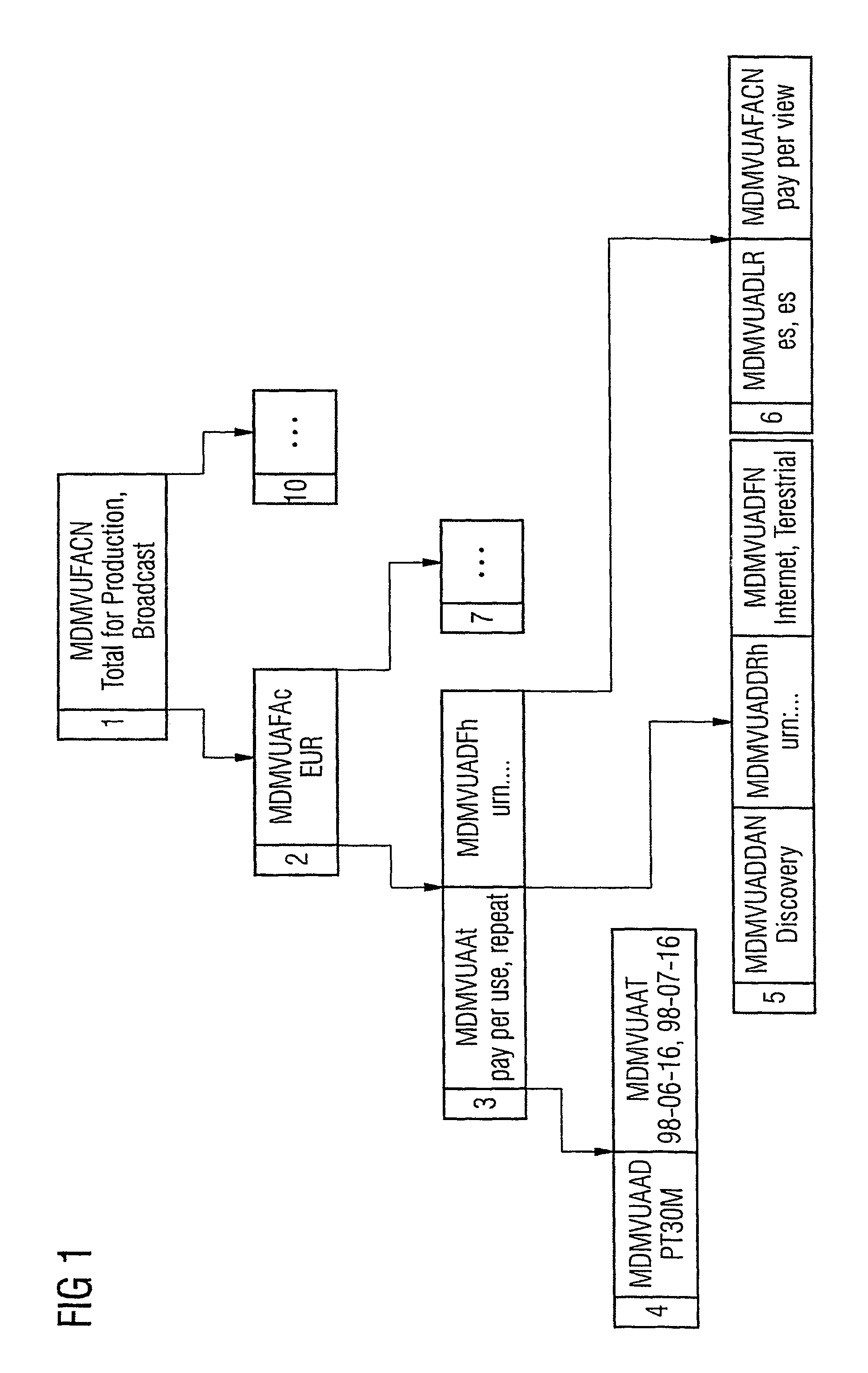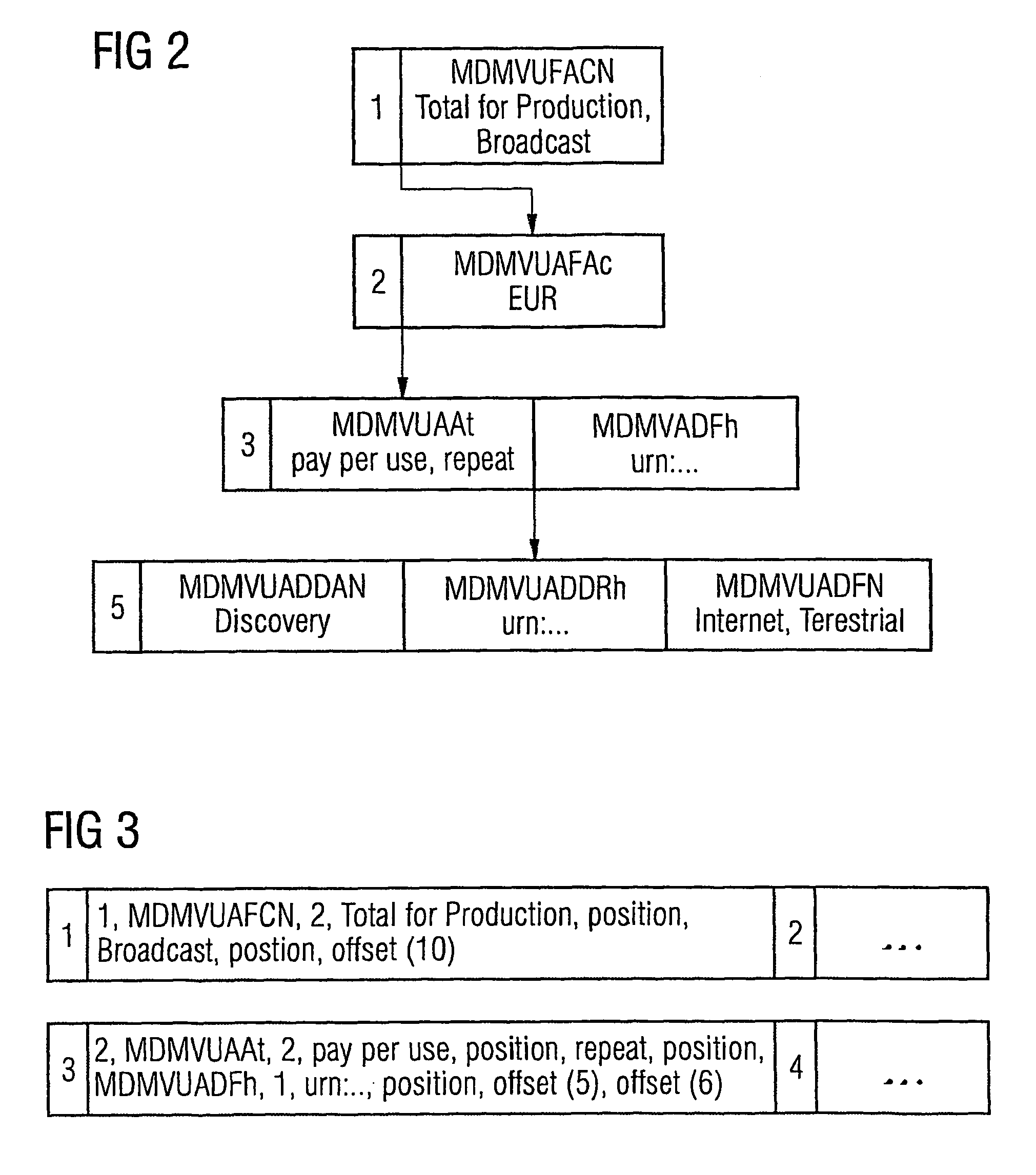Generating a bit stream from an indexing tree
a bit stream and indexing technology, applied in the direction of code conversion, selective content distribution, instruments, etc., can solve the problems of inability to meet the needs of certain time-critical applications, inability to search specific contents, and limited memory in the decoder, so as to achieve easy and efficient search for indexed data
- Summary
- Abstract
- Description
- Claims
- Application Information
AI Technical Summary
Benefits of technology
Problems solved by technology
Method used
Image
Examples
Embodiment Construction
[0028]FIG. 1 shows an example of an indexing tree used in the method according to the present disclosure. The tree is what is known as a B tree (where B stands for Balanced) which is often used for the indexing of data. The structure of a B tree is described for example in the already mentioned reference [5]. The B tree has a balanced structure and consequently permits searching with only a logarithmic overhead compared to the number of entries, whereas a linear overhead is required for searching by means of a list.
[0029]The indexing tree contains a plurality of nodes 1 to 10, with one or more items of index data being stored in each node in the form of what are referred to as keys. In the present case the items of index data are XPATH paths of a description tree of an XML document. A description of XPATH paths can be found in the already mentioned reference [2]. The XPATH paths lead from the root node of the description tree of the XML document to the individual leaf nodes of the d...
PUM
 Login to View More
Login to View More Abstract
Description
Claims
Application Information
 Login to View More
Login to View More - R&D
- Intellectual Property
- Life Sciences
- Materials
- Tech Scout
- Unparalleled Data Quality
- Higher Quality Content
- 60% Fewer Hallucinations
Browse by: Latest US Patents, China's latest patents, Technical Efficacy Thesaurus, Application Domain, Technology Topic, Popular Technical Reports.
© 2025 PatSnap. All rights reserved.Legal|Privacy policy|Modern Slavery Act Transparency Statement|Sitemap|About US| Contact US: help@patsnap.com



